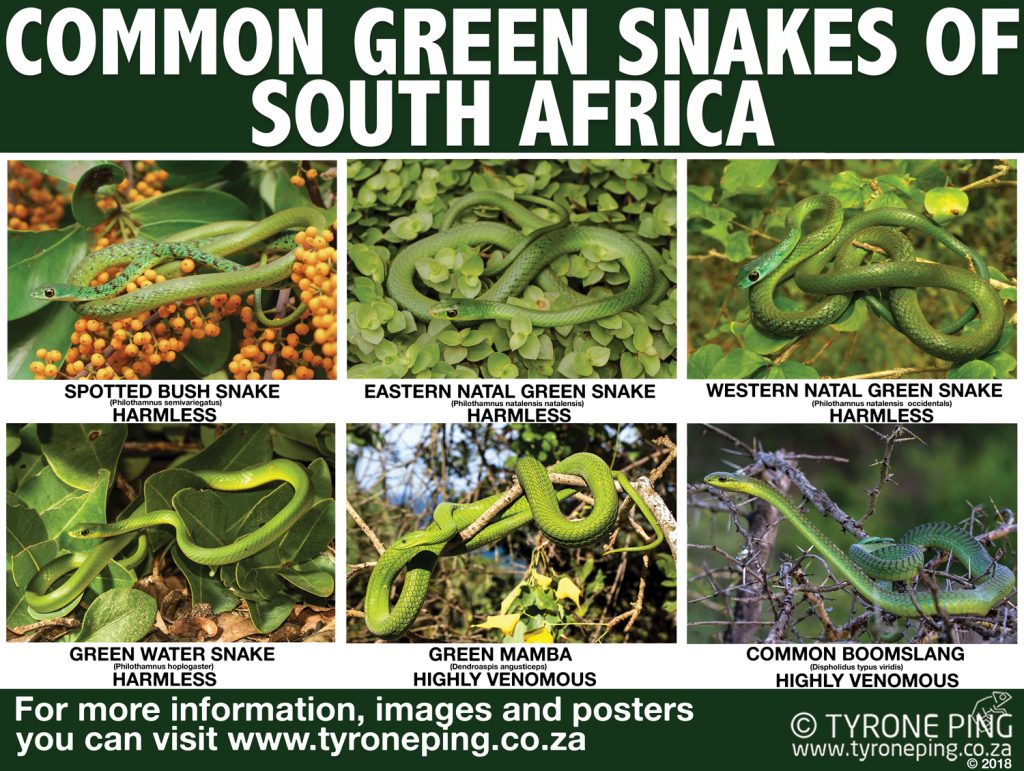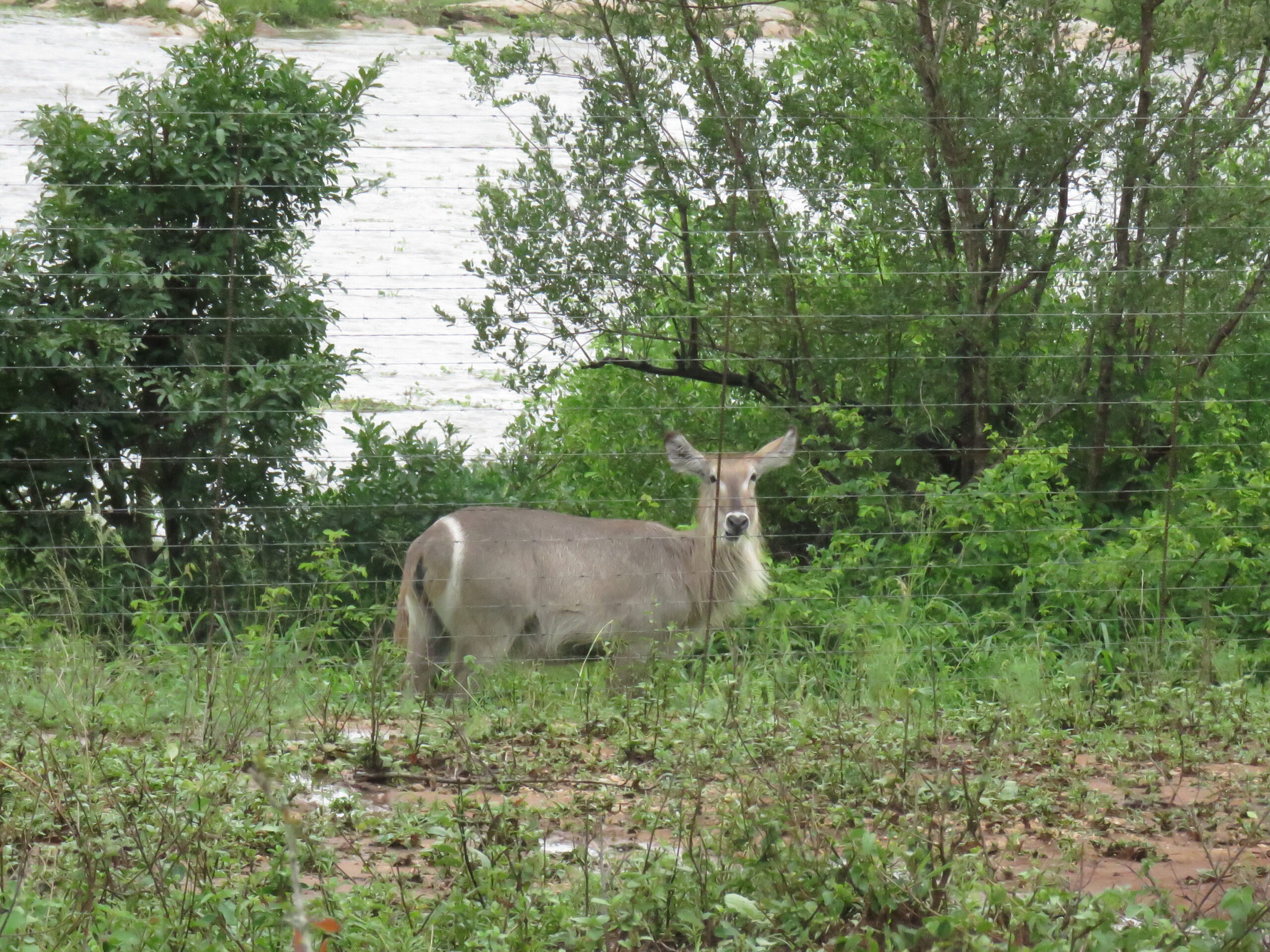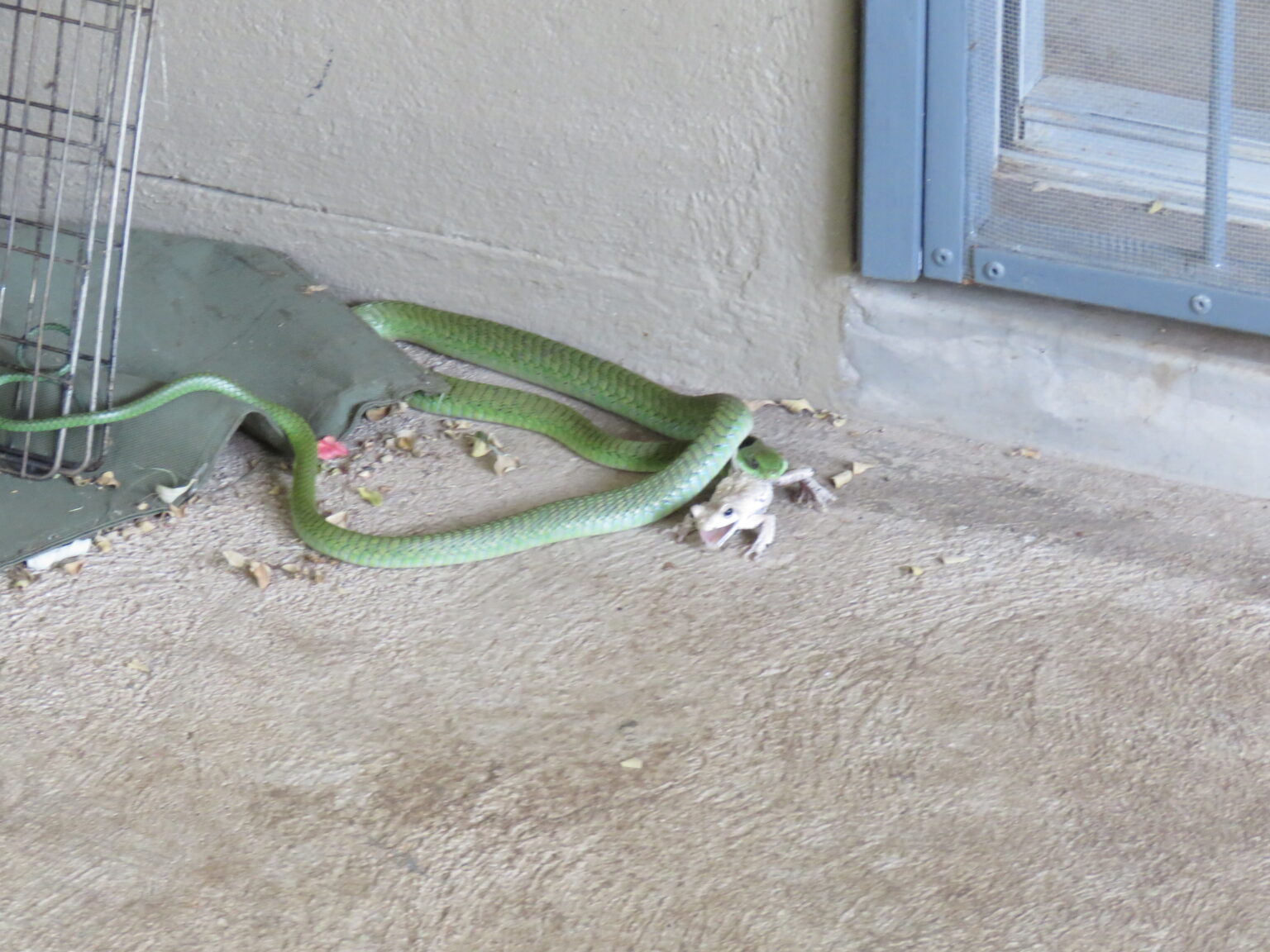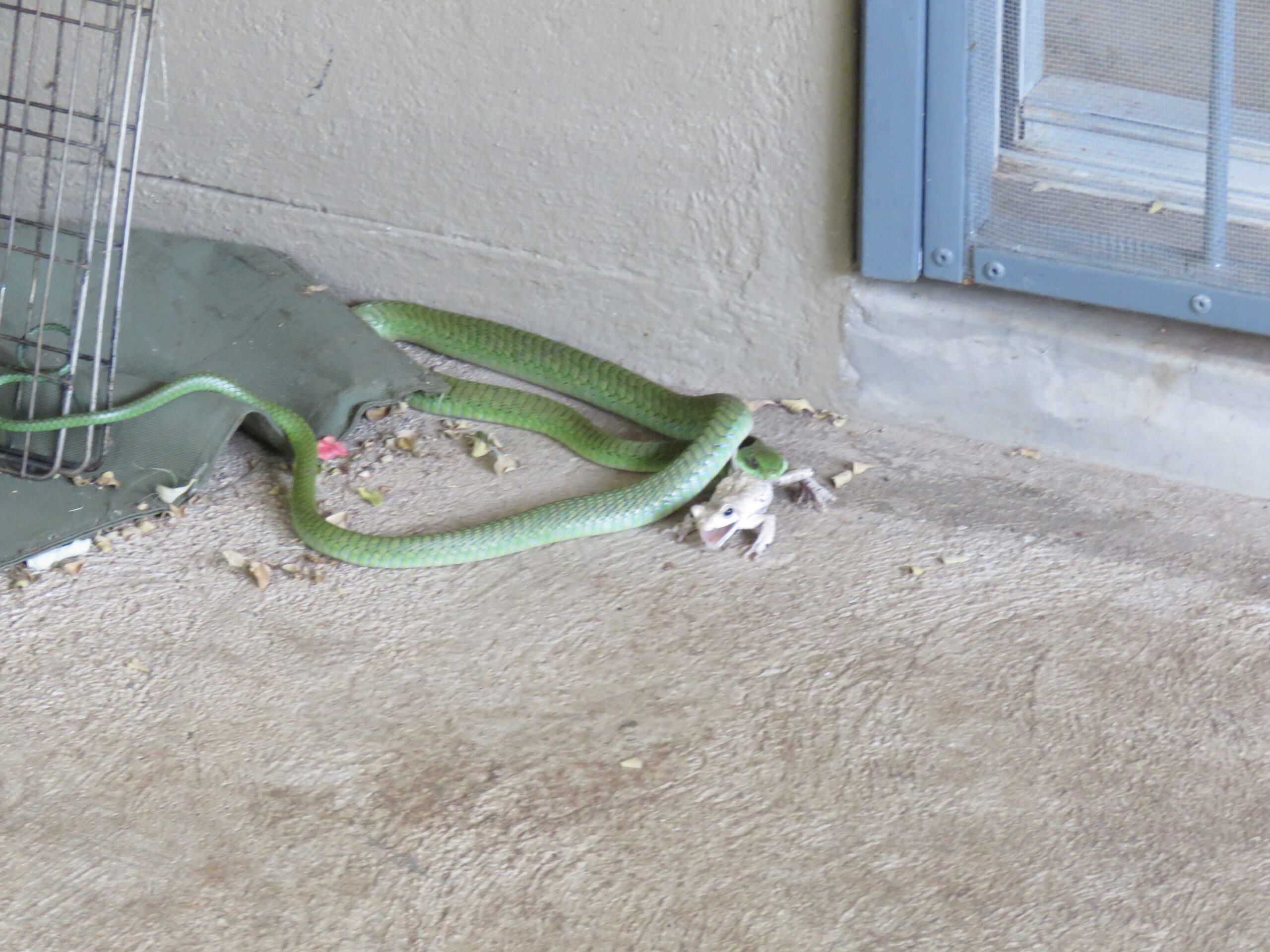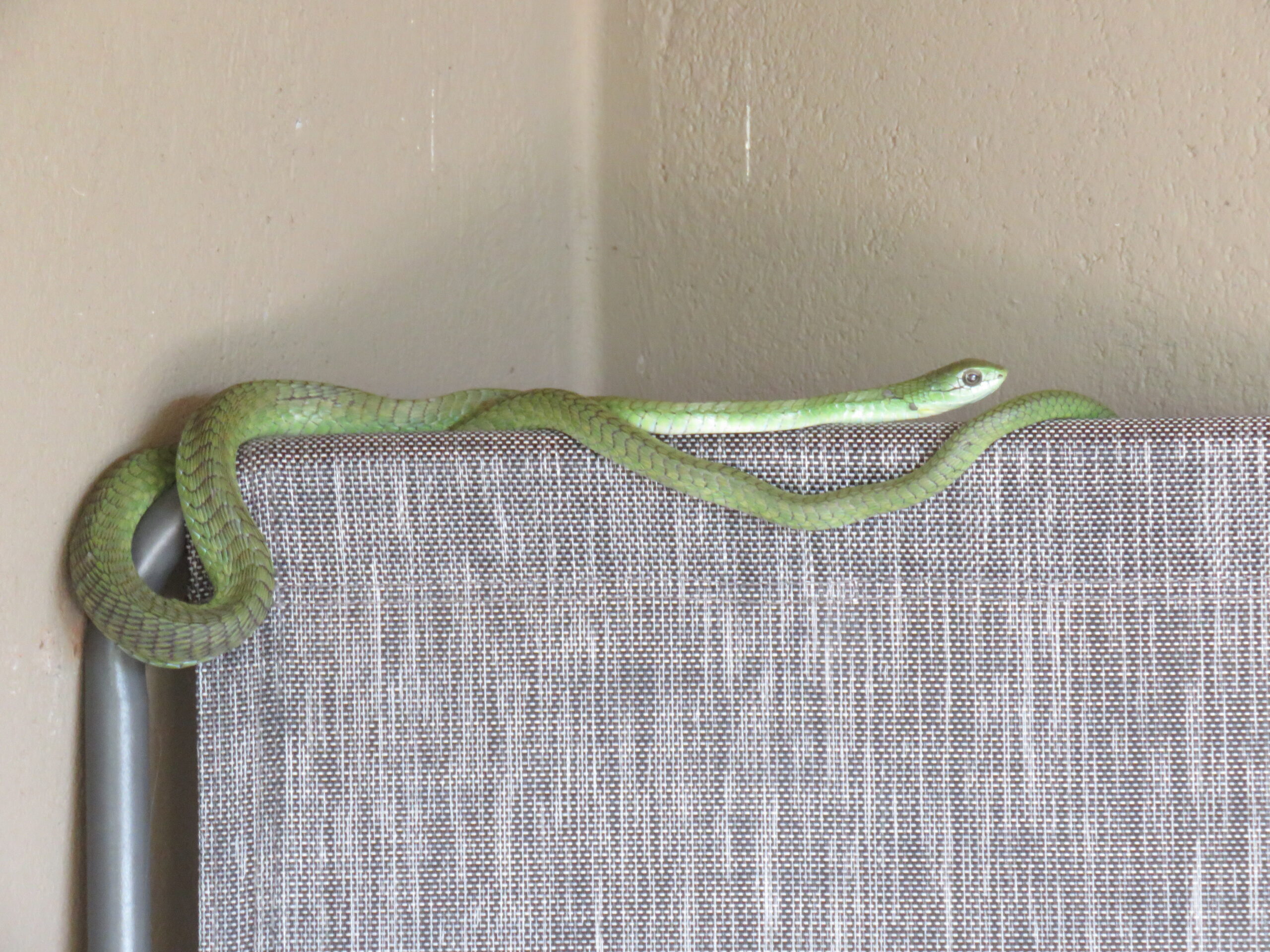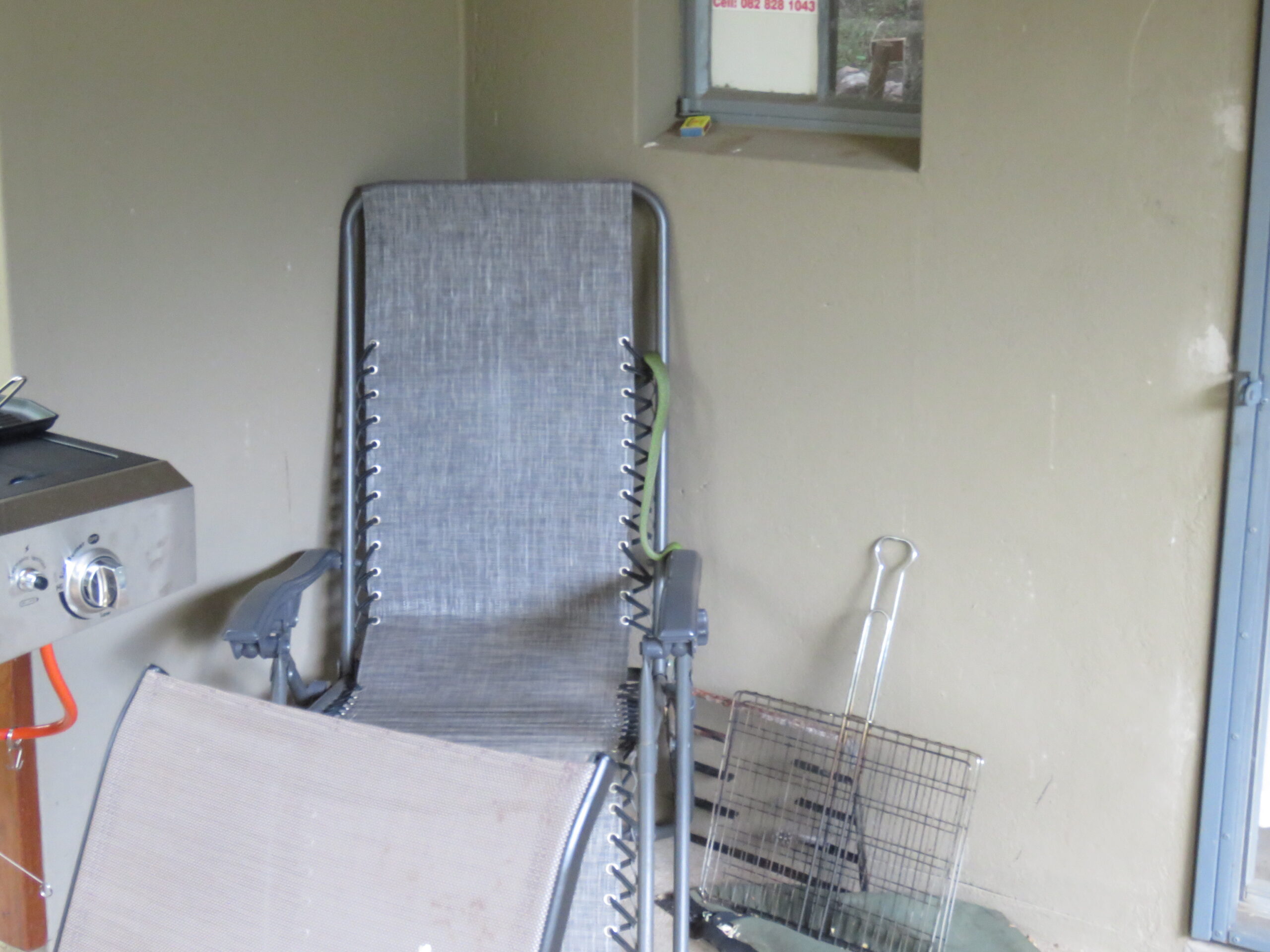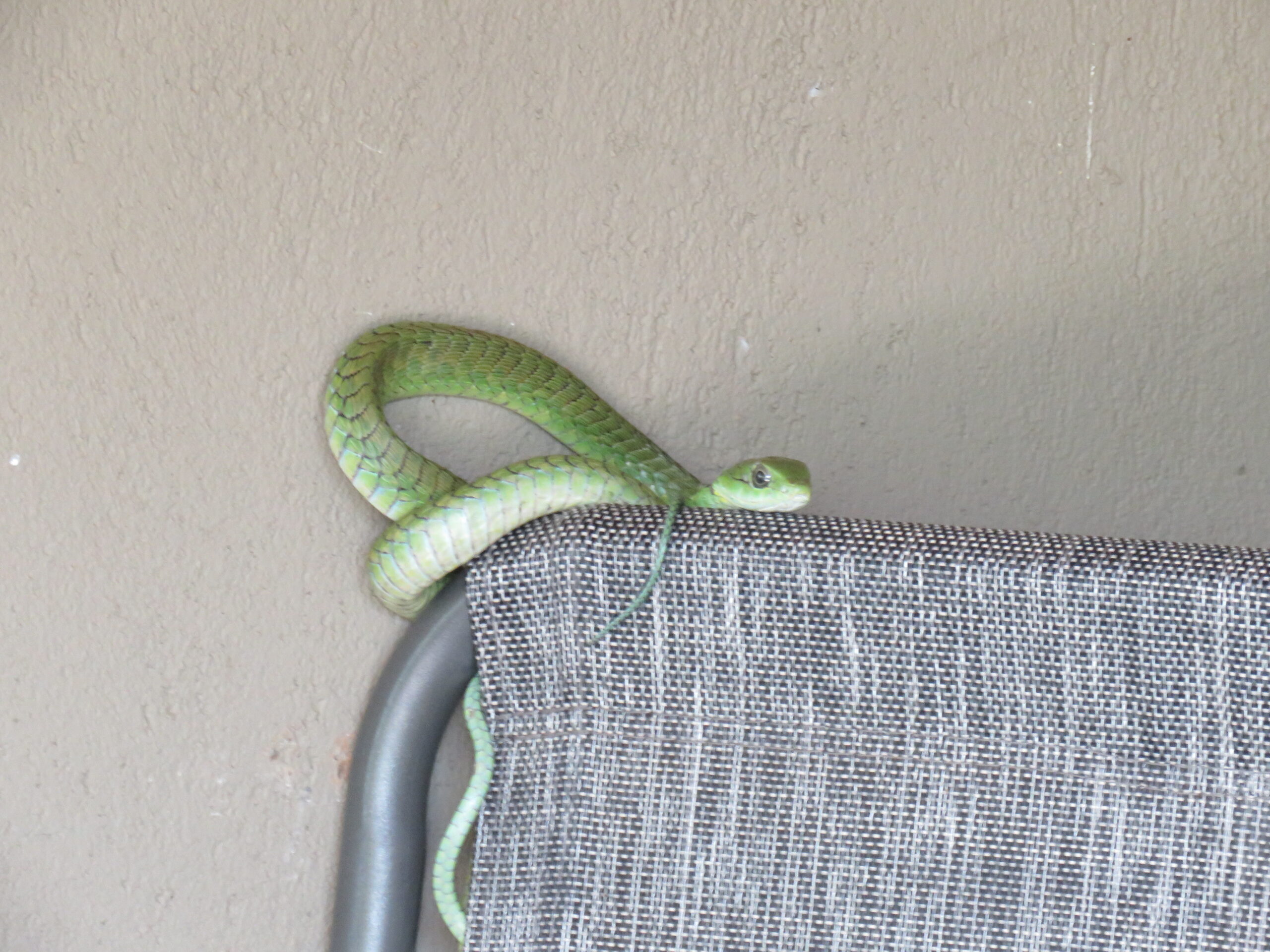
It’s that time of year in the bush…when the snakes come out of hiding during the cooler months to search for food in the warmer months. Week by week, the temperatures are climbing, and at the same time, the number of snakes to be seen in the bush is increasing exponentially.
Yesterday morning, while I was in the kitchen preparing a salad for dinner, Tom called me to hurry outside and bring the camera. I dropped what I was doing, and rushed out the door with the camera in hand, turned on and ready to go. The small snake slithered in and out of the slats on the wooden section of the deck of the veranda, making photo-taking tricky.
We suspected the snake was venomous. It appeared to be a young boomslang, but we were wrong. Once we got a decent photo, I sent it to Juan de Beers, one of the excellent snake handlers in Marloth Park. Juan has helped us on several occasions when there have been venomous snakes in our garden. There’s no charge for this service, but it makes sense to give him a donation for his expert efforts, which we’ve always done.
Once I uploaded the photo, I sent it to him to see if he could identify it from the photo and thus determine if he needed to come out and remove it. Snakes are not killed when rescued, regardless of the type of danger from a particular snake. They are moved to the river or other wildlife areas, safe from human intervention.

A short time later, I heard from Juan, and he identified the snake as a spotted bush snake, described as follows from this site:
“Full Name: Spotted Bush Snake (Philothamnus semi variegates)
Other Names: Variegated Bush Snake; Gespikkelde Bosslang
Classification: HARMLESS
An alert, day-active snake that climbs well and is often found between the walls and ceilings of outbuildings, where it hunts for geckos and frogs. Sadly this harmless snake is often mistaken for a Green Mamba and needlessly killed.
The body is bright green to copper-green with distinct blackish spots on the front half of the snake but little or no dark marks on the back half. The belly is yellowish to white, and the pupil is orange.
This snake has keeled belly scales, enabling it to climb up the bark of a tree or even up face-brick walls. It is commonly found in suburban gardens, and domestic cats often kill juveniles.
There are a number of harmless green snakes of the genus Philothamnus and they can be quite difficult to tell apart.”
There was no danger to us from this snake. Juan offered to come out and remove it, but we saw no need. It might have been the same snake we saw climbing on a tree in our nearby garden in early winter that made its way to the underside of the wooden deck. Yesterday, a pleasant warm day, the snake may have decided to venture out from hiding to search for food.
Tom had watched the snake interact with a gecko. Perhaps, that was its attempt at a nice little breakfast. Do snakes hibernate? Here is the answer from this site:
“Snakes and hibernation
Hibernation has been described as an inherent, regular, prolonged period of inactivity during winter. Hibernation is a term associated with warm-blooded animals (endotherms) such as mammals and refers to a period of inactivity as well as a shut down in the metabolic system to save energy. Reptiles on the other hand are said to brumate – become less active, but do not shut down and will be active with a slight increase in temperature. The term brumate was coined by Wilbur Waldo Mayhen back in 1965 and referred to research he was doing on Flat-tailed Horn Lizards – he found that even if he heated these lizards up in winter, unlike other lizards, they would still not feed and become lethargic. Strangely, Mayhen’s term does not technically apply to the standard period of inactivity in our reptiles as our reptiles will become active with a slight increase in temperature on a warm winter day.
Snakes in cold regions of the world go into a state of torpor (inactivity) for long periods of time, up to 8 months, and often in dens where hundreds or even thousands of snakes may share the same winter shelter.
In Southern Africa it rarely gets cold enough for snakes to truly go into torpor and although they are far less active in winter, snakes may emerge from their winter hide-outs on a warm winter day to bask in the sun and drink water.
According to Professor Harry Greene, snakes consume between 6 – 30 meals per year and this is in summer. During winter, they do not eat very little or, if they do, very little. Most mammals will die within a few days if they are deprived of food but some snakes are known to have survived for more than a year without a meal. Because snakes are ectotherms and require no food for their heat requirements, they can survive with very little food and a large Puff Adder probably consumes less than 1 kg of food per year.
Prior to winter there is a peak of snake activity in South Africa as snakes build up fat reserves and seek a suitable shelter for the cold months ahead. But some snakes, like pythons and Puff Adders, are actively busy with mating on the Highveld right into the middle of winter.
When seeking a hide-out for winter, snakes will carefully seek a shelter that (a) has sufficient moisture to ensure that the snake does not desiccate and (b) cannot easily be located by predators. As it cools down, the snake may move deeper and deeper into its hole but rarely remain motionless unless the temperature drops to zero degrees C.
With a dramatic drop in snake activity in winter, very few bites are reported and the majority of bites on humans are recorded in the warm summer months of January – April/May.”

We watched the harmless snake slither away, content we had no concern about it staying in our garden through the upcoming hot summer months, when snakes are seen more frequently. Of course, I’ll always say, “Watch for snakes,” when walking outdoors both during the day and at night.
A few years ago we saw a venomous snake on the handrail on the stairs leading to Jabula. As we started up the steps, bystanders hollered to us, “Don’t go up there! There’s a snake!” We were grateful for their intervention. Juan came and removed the snake a short time later.
Our fingers are crossed for our dear friend Leon, who is still in hospital in Nelspruit. It will be weird to go to Jabula tonight and he won’t be there. He and I have chatted back and forth over the past few days and he sounded better than we’d expected. But, in support of Dawn and the restaurant, we’ll still go for dinner tonight and tomorrow night.
Small or baby snakes are not more or less venomous than the larger of the species. The venom is the same and can easily be as deadly as full-grown adults. All snakes must be avoided, respectful of their habitat and avoiding the risk of a life-threatening bite (or spray from a Mozambique Spitting Cobra). It is wise to notify certified snake handlers to remove venomous snakes from human-occupied areas.
Be well.
Photo from one year ago today, November 4, 2021:






